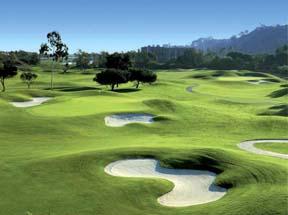For most professional turf managers, the question of using irrigation water of poor quality and less of it is a matter of when, not if. Researchers at New Mexico State University recently completed a study aimed at determining whether water-saving irrigation systems coupled with supplies of poor quality water could be an acceptable method for establishing newly seeded turf areas.
Although subsurface drip lines might be an effective way to conserve water, when it comes to establishing turf its hard to be an overhead sprinkler.
 That is the take-home message from the study completed in 2011. But all hope is not lost.
That is the take-home message from the study completed in 2011. But all hope is not lost.
According to the study, newly seeded plots of tall fescue and Kentucky bluegrass generally showed more cover 30 days after establishment when watered with an overhead sprinkler than those irrigated with a subsurface capillary system.
The results of the study recently were published in Agronomy Journal.
Plots were seeded Sept. 28, 2009 and Oct. 28, 2010 with tall fescue and Kentucky bluegrass and irrigated with saline and potable water through both delivery methods.
After the first year of the study, plots irrigated with a sprinkler system showed an average of 4,000 tall fescue seedlings per square meter 30 days after seeding, while there were an average of 2,800 seedlings per square meter in areas watered with the subsurface capillary system. The delivery systems used resulted in more significant differences in coverage than the potable or saline water source.
It also took the plots irrigated with the subsurface system much longer to achieve acceptable turf coverage. On average, plots watered with a sprinkler system achieved 75 percent coverage after 189 days while those areas irrigated with the subsurface system did not achieve 75 percent coverage until 268 days after seeding regardless of which water source was used.
The researchers concluded that subsurface systems are adequate for establishment of cool-season turf, but turf managers should expect a slower grow-in period than if a standard sprinkler system were used. However, they also noted that further research is necessary to determine whether a subsurface system will provide acceptable turf quality over time, particularly with low-quality irrigation water.

